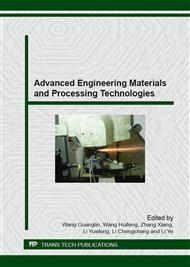p.470
p.476
p.481
p.487
p.493
p.500
p.506
p.512
p.518
Simulation and Analysis of Passive Torque Servo System
Abstract:
Passive torque servo system (PTSS) is a key equipment in the hardware-in-the-loop experiment for the test of actuator performance. A novel mathematical model was obtained by analyzing the structure and working conditions of PTSS in this paper and the model was analyzed with the matlab software. PID controller was used to correct the actuator system and the result is effective. The disturbance torque was analyzed on different frequency of command signal, it was found that the disturbance torque increases, and with the phase ahead of the signal, but the amount of lead decreases with variation of frequency of command signal. Three components of the disturbance torque were obtained by theoretical analysis, and the reverse current compensation method was composed. It was found that the proportion of three parts of disturbance torque changed with increasing frequency of command signal and the reason of the variation was analyzed. Finally, the theoretical analysis of the construction of disturbance torque was correct by the comparison of the result of simulation.
Info:
Periodical:
Pages:
493-499
Citation:
Online since:
October 2015
Authors:
Price:
Сopyright:
© 2016 Trans Tech Publications Ltd. All Rights Reserved
Share:
Citation:


